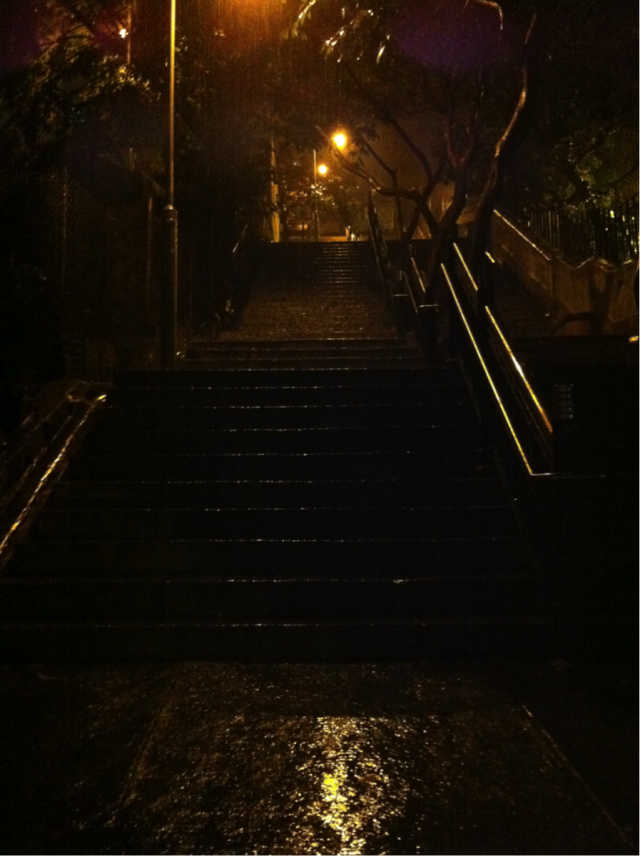From The Common:
I got caught in a deluge the other night, and when it hit me, it hit me just like that, italicized, like the rain was coming down so hard even the words to describe it were soaked and falling to the ground. I was in the back streets of Sheung Wan, an old part of town on the outskirts of Central that rests against the side of a hill. Steep stone staircases run up and down and through the area, and on a sunny Sunday morning you can play snakes and ladders with the past, sliding down to a street of antique stores that sell Bruce Lee posters from the 60s and twin-lens reflex cameras from the 30s, or climbing up to peek inside the few Edwardian mansions that remain, the once proud homes not of colonial officials, but of the Chinese compradors who even then—or maybe especially then—had a thing about putting the white man in his place.
But on a dark and stormy Thursday night, the staircases cascade into waterfalls, the rain drowns out the sounds of today and the clouds block out the sights, and suddenly, in those back streets of Sheung Wan, it’s like you’re walking through an old photo, or playing out a scene from In the Mood for Love. You could just as well be looking out from under your umbrella into the Hong Kong of the 1950s, a turbulent, less hopeful place, the Hong Kong of my father. There is one street just like this, Bridges Street, with staircases on either end, an art-deco church, the red-brick YMCA building built at the close of the First World War and, across from it, the old Chinese YMCA secondary school. In the dark, in the downpour, it looks exactly what it must have looked like to my dad as he came to school here each day as a teenager, not long before he immigrated to Australia. Maybe he stood there one rainy day just as I did, looking down the street past the church and the school, beyond the staircase, wondering where this road was going to take him, and if it was ever going to take him home.

